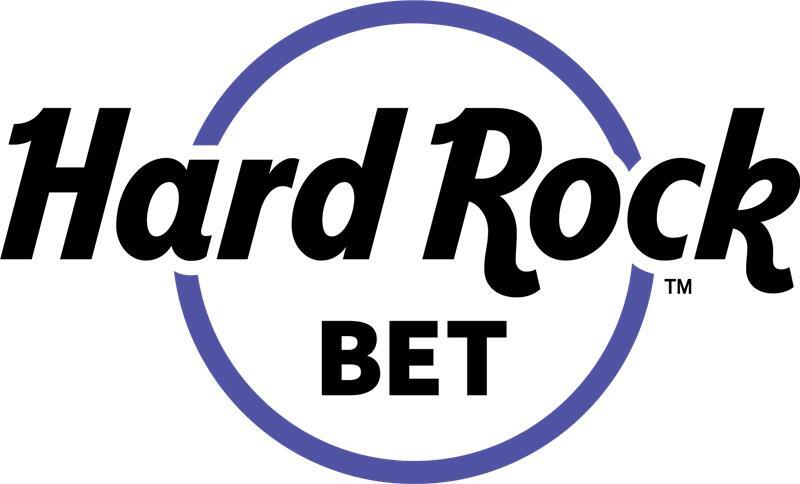Martingale System for Roulette Gaming
The Martingale is a high-risk system where you double your bet after every loss on even-money wagers (e.g., red/black) when playing
Category Ratings
This page contains references to products from one of our advertisers. We may receive compensation when you click on links to those products. Terms apply to the offers listed on this page. For an explanation of our Affiliate Policy, visit this page.
Though risky, some U.S. players try it on single-zero wheels for better odds. Success requires high table limits and deep bankrolls. Due to its simplified format, it’s a popular betting strategy for roulette players.
Snapshot: Very high volatility. Best for even-money bets on single-zero tables. Budget ≥ 100x base unit.
Core Steps
- Pick a base bet (e.g., $5).
- Bet one unit.
- Lose? Double next bet.
- Win? Reset to $5.
- Goal: +$5 per win cycle.
Spin Example
- $5 → ❌
- $10 → ❌
- $20 → ❌
- $40 → ❌
- $80 → ❌
- $160 → ✅
Profit: $5 | Risked: $315
Historical & Mathematical Background
The Martingale strategy dates back to 18th-century France, where it was used on simple coin toss games. Its name derives from a betting craze in the town of Martigues. By the 19th century, it gained traction in Victorian England and at Monte Carlo casinos, becoming a go-to method for chasing small, steady wins.
In probability theory, a “martingale” refers to a fair betting process where the expected value of the next outcome equals the current one. Mathematicians like Paul Lévy and Jean Ville coined the term. While the casino version borrows the name, it doesn’t share the mathematical fairness.
EV Snapshot (Single Zero Wheel):
Expected Loss = 2.70% × Total Wagered (or 5.26% with double-zero games)
Even if you eventually win, the house edge still applies to every dollar risked. So, if you wager $315 to win $5, your expected loss is $8.51.
Martingale doesn’t reduce the edge—it just front-loads variance, risking large sums for small, short-term gains.
Table Requirements and Optimal Wheel Selection in the US
The Martingale system best applies to even money bets—red/black, odd/even, or high/low—on European or French single-zero roulette. These offer a lower house edge (2.70%), and La Partage rules cut this edge to 1.35%, refunding half the bet on zero.
In leading US live dealer studios (e.g., Evolution-powered DraftKings or BetMGM), outside bet ladders typically run from $0.20 to $1,000. These limits define how far a Martingale chain can go before hitting a cap.
All licensed US casinos must comply with state gaming regulations. Automated betting scripts, bots, or macros are prohibited unless expressly approved by the operator.
Step-by-Step Walk-Through With Annotated Bet Tracker
Let’s say you’re betting on red using the Martingale strategy with a $2 base unit:
Spin 1: Bet $2 → Lose (Total loss: $2)

Spin 2: Bet $4 → Lose (Total loss: $6)

Spin 3: Bet $8 → Lose (Total loss: $14)
Spin 4: Bet $16 → Lose (Total loss: $30)
Spin 5: Bet $32 → Win (Payout: $64). Net profit = $64 − $62 staked = $2. After this win, you reset the bet to $2.

Getting Started at a US-Licensed Online Casino
Verify the license – Scroll to the casino’s footer and check for official seals from your state’s regulator (e.g., NJ DGE, MI Gaming Control). The license number and terms should be visible and clickable.
Register and verify—Complete registration and upload a photo ID and a recent utility bill or bank statement to pass KYC (Know Your Customer) checks.
Claim a bonus—Look for a no-wagering bonus that allows table games and opt in before depositing. Confirm that roulette is eligible.
Deposit safely – Use approved US payment methods like debit card, PayPal, online banking, or Play+ to fund your account instantly.
Use the offer – Place your bets. Any winnings from the bonus are yours to keep, with no rollover or cash-out restrictions. (If you find an applicable bonus)
Bankroll Planning & Stop-Loss Rules
Due to its steep risk curve, a large bankroll is essential to safely run the Martingale system. We recommend starting with at least 100 base units. A $2 base bet means a minimum bankroll of $200.
Below is a calculator table showing how quickly bets escalate with eight straight losses:
| Spin | Stake ($) | Cumulative Exposure ($) |
| 1 | 2 | 2 |
| 2 | 4 | 6 |
| 3 | 8 | 14 |
| 4 | 16 | 30 |
| 5 | 32 | 62 |
| 6 | 64 | 126 |
| 7 | 128 | 254 |
| 8 | 256 | 510 |
| 9 | 512 | 1,022 |
To protect your funds:
Set a stop-loss at 25% of your bankroll (e.g., $50 on a $200 roll).
Set a stop-win target at 10% (e.g., walk away with $20 profit).
Discipline is key—never chase losses or stretch your betting beyond your limits.
Variations & Tweaks Used by Seasoned US Players
Review variations with small tweaks to the standard Martingale system below, which are used by seasoned roulette players in the US. These tactics can increase win potential but can require deeper pockets or excellent discipline.
Grand Martingale
• How it works: Double your previous bet plus one base unit after every loss.
• Pros: Faster recovery with slightly higher profit per win.
• Cons: Bankroll drains quicker; higher risk of hitting table limits.
• Best for: High-limit players at $100+ tables with wide max bet ceilings.
Mini Martingale
• How it works: Limit progression to a fixed number of doublings (e.g., 3–4), reset to base bet.
• Pros: Reduces catastrophic losses; better for tight budgets.
• Cons: Doesn’t always recover full losses.
• Best for: Micro-stake mobile players using $0.10–$2 units.
Anti-Martingale (Reverse Martingale)
• How it works: Double after each win, reset after a loss.
• Pros: Locks in hot streaks, limits exposure during losing runs.
• Cons: Requires excellent timing and discipline.
• Best for: Risk-aware players aiming for short, streak-based profits.
Each variant trades safety for potential payout. Micro-stake users may lean toward Mini or Anti-Martingale for better bankroll control, while Grand Martingale suits those chasing faster gains with deeper pockets.
How Does Martingale Compare to Other Systems?
The Martingale is the simplest and most aggressive negative progression system: double after a loss, reset after a win. While it can recover losses quickly, its exponential growth rate means it collides with table limits fast and requires a large bankroll. Here’s how it compares to other popular roulette systems:
Martingale vs Fibonacci
Fibonacci increases bets more gradually using a sequence (1, 1, 2, 3, 5, etc.). It recovers losses slower but is less likely to hit table limits quickly. Players often feel less pressure per spin, though longer losing streaks can still lead to steep bet sizes.
Martingale vs d’Alembert
D’Alembert raises bets by one unit after a loss and lowers them by one after a win. This system is milder, creating less financial pressure. Losses take longer to recover but bet amounts remain manageable for more sessions.
Martingale vs Labouchere
Labouchere involves crossing off numbers in a written sequence, adding complexity. While it spreads recovery across multiple wins, it can also result in large bets if the sequence grows. It requires more tracking but offers flexible goal setting.
Quick Comparison Matrix
| System | Growth Rate | Cap Risk | Recovery Speed | Complexity | Stress Level |
| Martingale | Very High (2ⁿ) | Very High | Fast | Low | High |
| Fibonacci | Moderate | Medium | Moderate | Medium | Medium |
| d’Alembert | Low | Low | Slow | Low | Low |
| Labouchere | Variable | Medium–High | Moderate | High | Medium–High |
Ideal US-US-facing casinos & Live Studios to Practice the System
Once you join a reputable US casino site, you can use low-limit play to practice a system or try out other casino games. Choose from the studios below for more gaming variance and quality streaming services.
Evolution Live (FanDuel, DraftKings, BetMGM)
Evolution includes single zero wheels with La Partage on select tables. Limits: $0.20–$2,000. Features can include Rebet x2, bet history, and “favorites.” No autoplay, but VIP rooms support ladder play. Loyalty programs may offer loss rebates or cashback.
Playtech Live (BetRivers)
Playtech offers European and American wheels at several US casinos. Premium tables include La Partage. Min/max: $1–$5,000. UI supports bet memory, auto-double, stats view. Cashback up to 15% for volume play.
Common Misconceptions & Pitfalls
Many new players believe a win is “inevitable” after a string of losses, but roulette outcomes are independent. This is the gambler’s fallacy; the mistaken idea that past spins influence future results.
In truth, loss streaks of 7–10 spins are not rare. On a $2 base unit, just eight losses require a $512 next bet and over $1,000 total risk.
Another trap is raising the base unit mid-session and chasing your losses without a proper bankroll. This accelerates burnout.
Martingale is not a guaranteed profit system but a high-risk, short-term tactic that requires discipline, fixed units, and realistic limits.
Tips & Tricks for Getting Started with Martingale
To use the Martingale system responsibly and get the most out of it, follow these five key tips:
• Keep the base unit small—no more than 1% of your total bankroll
If you have $200 to play with, start with $2 bets. This gives you room to handle losing streaks without going broke too soon.
• Choose single-zero (European) wheels, ideally with La Partage
This rule refunds half your stake when the ball lands on 0, cutting the house edge nearly in half on even money bets.
• Track your play
Use a simple spreadsheet or app to log every spin. This helps you stay disciplined, manage progressions, and know when to stop.
• Set limits before playing
Activate deposit caps, loss ceilings, and session time limits in your casino account. These tools protect you from chasing losses and help you play within your means.
• Practice for free first
Try RNG (computer-based) roulette without risking money to get a feel for the system. When ready, use a bonus from one of our trusted operators—these can extend your trial bankroll without wagering traps or empty hype.
Other Applications of Martingale
The Martingale system isn’t limited to roulette—it also sees brief use in blackjack and baccarat, particularly on even-money bets like player/banker in baccarat or red/black-style streak chasing in blackjack. However, table limits and streak volatility make it riskier in those settings.
Read more on our Martingale Blackjack strategy page and feel free to link back if you found this guide useful.
Responsible Gaming
No roulette strategy, including Martingale, can eliminate the house edge. Even on European wheels with La Partage, the built-in advantage—usually 1.35% to 2.70%—remains unchanged no matter how you adjust your bets.
While progression systems may frontload wins, they also magnify losses during cold streaks. This is why strict money management is not optional; it’s essential.
Start by setting a fixed budget cap before your session begins, ideally no more than you’d spend on entertainment. Use session timers to limit continuous play and take cooling-off breaks even if you’re ahead. Winning streaks can feel euphoric, but chasing more after hitting your stop-win target often leads to losses.
All licensed US casinos provide self-exclusion tools that can block your access to gambling platforms for days, weeks, or even permanently. They also allow for deposit limits, wager caps, and time-out features you can enable before your first spin. These tools are free, confidential, and designed to help you stay in control.
For ongoing support, visit trusted U.S.-based resources like 1-800-GAMBLER, NCPG, and GamTalk.
Whether you’re playing for fun or testing a strategy, protecting your mental and financial well-being should always come first.
Main Takeaways
The Martingale roulette system is easy to follow regardless of your skill level; double your bet after each loss to recover all previous losses and gain a small profit. However, its simplicity masks extreme volatility.
Long losing streaks quickly eat up your bankroll, and table limits can stop your progression before recovery.
The only rule-based edge softener is La Partage, found on some single-zero (European) wheels, where half your stake is returned on a zero result.
However, this doesn’t override the house advantage. That’s why stopping loss discipline and having a fixed bankroll plan are critical.
Martingale Recap – Key Takeaways:
- Simple: Double after losses, reset after wins
- High risk: 8+ losses = exponential stakes
- Bankroll: 100× base unit minimum
- Table limits block recovery
- La Partage softens zero hits
- Still negative EV (house always wins long-term)
- Use stop loss & session limits—non-negotiable
FAQs
What is the base staking rule in the Martingale roulette system?
Double your stake after each loss; reset to the base unit after a win.
How many betting units should I bankroll to survive eight consecutive losses at a $5 unit?
$1,280 total ($5 → $10 → $20 → $40 → $80 → $160 → $320 → $640).
Does the system work better on La Partage French tables than on standard European wheels?
Yes. La Partage halves losses on zero, slightly reducing the house edge.
How is the Grand Martingale different from the classic progression?
It adds one extra base unit to each doubled stake for faster recovery.
What happens if the table maximum is reached before a win occurs?
You can’t increase the bet further—your losses are locked in.
Can I use cashback or loss rebate offers to cushion Martingale variance?
Yes, if allowed by the terms. It can help soften big loss cycles.
Is Martingale viable in multiplier formats like Lightning or Quantum Roulette?
No. These formats have altered payouts and higher volatility, which is unsuitable for Martingale.
Do UK online casinos allow auto bet scripting for Martingale sequences?
Usually no. Auto-scripting is typically prohibited unless explicitly permitted.
Will employing Martingale breach a bonus max bet or wagering terms?
It can. Doubling quickly exceeds bet caps—always check bonus terms first.
How do I decide when to reset the progression or walk away?
Set stop loss and win targets before playing. Stick to them.
Does playing Martingale for thousands of spins alter the long-run house edge?
No. The house edge remains constant; time played doesn’t change it.
For almost two decades, Sadonna has remained at the forefront of the gambling industry in the US and abroad, covering the latest news and legal updates. Sadonna’s goal is to provide sports bettors and casino players with premium content, including comprehensive details on the US industry.













